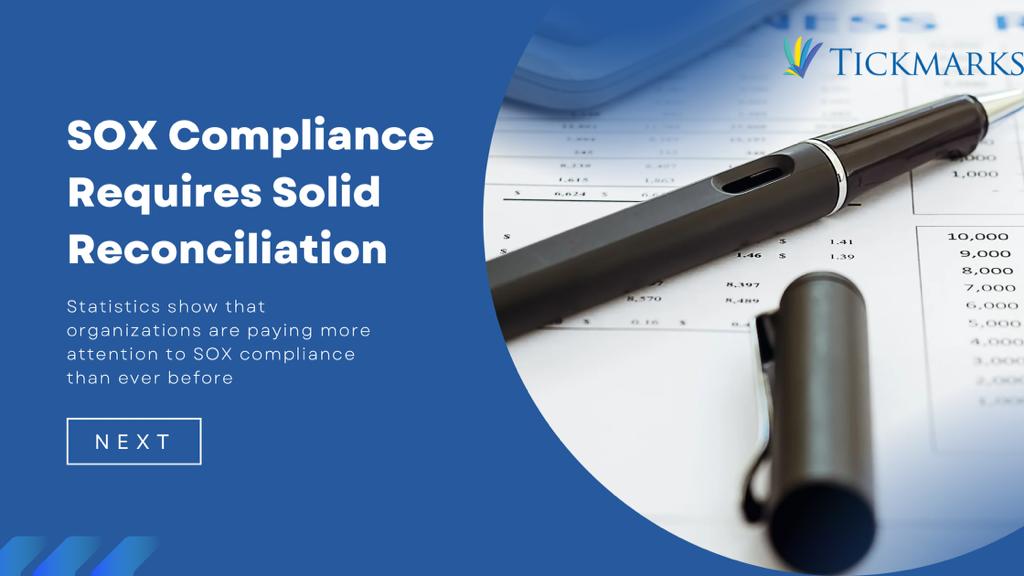
The Sarbanes-Oxley Act (SOX) of 2002 was enacted to protect investors from corporate fraud. It is a comprehensive law that requires companies to improve their internal controls, financial reporting processes, and corporate governance structures. In the eighteen years since its passage, SOX compliance has become an essential part of any publicly traded company's operations. Companies must comply with dozens of requirements to remain compliant with SOX regulations.
Statistics show that organizations are paying more attention to SOX compliance than ever before. According to KPMG’s 2020 Executive Survey on Audit & Risk Management, 77% of respondents reported that their organization significantly increased SOX-related activities as compared to previous years. Additionally, a PwC survey found that over 95% of companies are now taking a risk-based approach to SOX compliance.
The main requirements for SOX compliance fall within the following areas:
Organizations are required to develop and maintain appropriate internal controls and procedures which cover the protection, accuracy, and reliability of financial information. These include policies related to corporate governance, management oversight, risk assessment, information systems security, and access control. Companies must also ensure proper segregation of duties so that no single individual has too much control over any one process.
Additionally, processes must be monitored and regularly reviewed to ensure that any irregularities are promptly identified and addressed.
Organizations must provide accurate financial information, including periodic reports and earnings statements, to shareholders and other stakeholders. Companies must also disclose any material events or changes that could impact the company’s financial performance. Additionally, companies must provide timely notification if any financial irregularities are discovered.
SOX compliance also requires companies to have a transparent corporate governance structure. This includes establishing a board of directors with clear responsibilities and oversight, as well as certain committees, such as an audit committee or compensation committee. The company’s management team needs to be held accountable for its actions, including ensuring that all SOX requirements are met. Moreover, organizations must ensure that
their policies reflect their ethical standards and values, to maintain trust among shareholders and other stakeholders.
Organizations must regularly review their internal controls to ensure compliance with SOX regulations. Companies should also perform comprehensive testing on their systems, procedures, and financial statements to detect any issues or irregularities.
As companies strive to stay compliant with SOX requirements, many are embracing automation to streamline their processes and reduce the cost and complexity of compliance. According to a report by Deloitte, 76% of organizations are already using some form of automation for SOX compliance. This figure continues to rise as businesses recognize the value of automation for improving internal controls, reducing errors, and optimizing their overall financial reporting.
SOX compliance has become an essential part of any publicly traded company's operations, as non-compliance can result in financial penalties and other legal repercussions. It comes along with some benefits as well, however. Let's take a look at a few of the key advantages of having an effective SOX compliance program in place:
According to a 2019 survey by KPMG, 94% of organizations believe that SOX compliance has improved their risk management processes. By having an effective system of internal controls and financial reporting processes in place, companies can identify risk areas and address them quickly. Companies must also create routines to conduct regular risk assessments, which can help them spot any potential problems early and take the appropriate corrective action.
Investors and other stakeholders will have greater confidence in a company that has strong SOX compliance procedures in place. This can help to attract and retain high-quality investors and increase the overall value of the business. Additionally, having effective SOX compliance procedures in place can help to protect the company from any legal issues or financial penalties that may arise due to non-compliance.
Streamlining balance sheet account reconciliations can help to improve accuracy, reduce errors, and save time. Automating the process with specialized software also ensures compliance with SOX regulations and increases the speed of financial reporting. Automation can also improve internal controls by providing more visibility into accounts and creating a uniform process for verifying information. Blue Star India used automated reconciliations to reduce their time spent on the process by 33%.
By having strong compliance processes in place, companies can provide greater transparency in their operations. This can help to build trust with stakeholders and improve the overall perception of the business. P2P Solutions offers a range of services to help companies achieve their SOX compliance goals. Colas France used a P2P system to improve their balance sheet account reconciliations and increase visibility into their financial processes. The company achieved a reduction in time spent on account reconciliation and improved control over the
accuracy of its financial information by 98%.
SOX compliance can help to improve cost savings by reducing the need for manual processes and expediting financial reporting. Automation also helps to reduce errors while increasing accuracy, which further reduces costs associated with manual work and error correction. Companies can also benefit from improved cost savings by reducing the amount of time spent on auditing activities, as well as gaining more control over their financial operations.
In conclusion, there are many benefits associated with having an effective SOX compliance program in place. These include improved risk management, enhanced stakeholder confidence, streamlined balance sheet account reconciliations, increased transparency, and improved cost savings. By embracing automation and streamlining their processes companies can gain a competitive advantage while ensuring they remain compliant with SOX regulations. With Tickmarks' virtual bookkeeping services, companies can outsource their financial process to experienced professionals and improve their SOX compliance.